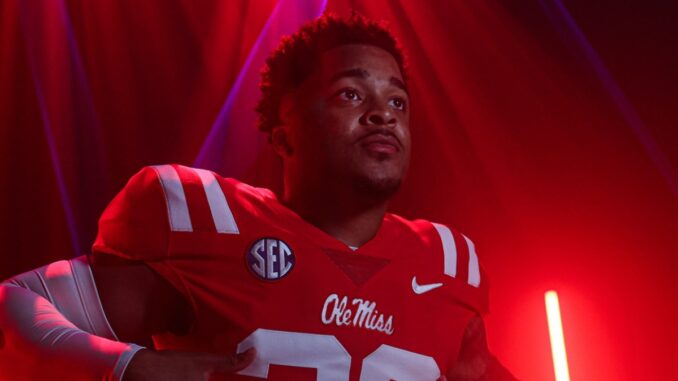
Ole Miss football prodigy Caleb Cunningham has inked an unprecedented $50 million shoe deal with global sportswear titan Nike. This landmark endorsement, the first of its kind at the collegiate level, signals a seismic shift in the evolving world of Name, Image, and Likeness (NIL) rights, catapulting Cunningham into the stratosphere of sports marketing before even taking a snap in the NFL. At just 20 years old, the young wide receiver has become a symbol of a new era where collegiate athletes are no longer just stars in waiting—they are full-fledged brands.

Cunningham’s deal dwarfs most previous NIL contracts and sets a new benchmark for what is possible for college athletes in the era of monetized branding. While top college athletes have signed lucrative agreements with local businesses and national brands in recent years, none have approached the magnitude of this Nike partnership. The sheer scale of the deal puts Cunningham in league with some of the world’s most marketable athletes, placing his name alongside sports icons such as LeBron James, Serena Williams, and Cristiano Ronaldo. It’s a clear message that college athletes with elite talent and marketability can command professional-level compensation while still on campus.
This partnership is a strategic move for Nike, which has long prided itself on signing young, charismatic athletes with massive potential. With college football’s popularity skyrocketing and social media amplifying player reach like never before, investing in a star like Cunningham allows Nike to secure brand loyalty and cultural relevance among younger audiences. From an economic perspective, the company’s bet on Cunningham is about more than performance—it’s about influence, visibility, and long-term marketability. His charismatic personality, compelling backstory, and on-field dominance have created the perfect storm for a brand deal of this magnitude.

The implications of this deal extend far beyond Ole Miss or even college football. Cunningham’s contract could have a domino effect, prompting other major brands to invest heavily in college athletes across multiple sports. We may soon see similar multimillion-dollar endorsements for top talents in basketball, gymnastics, track and field, and beyond. Additionally, this could shift recruiting dynamics, as high school athletes begin weighing not only a school’s athletic prestige but also its track record in helping players land major NIL deals. College programs that embrace this new era and help athletes build their brands will likely gain a competitive edge.
Critics, however, warn that the commercialization of college athletics at this level could further blur the lines between amateur and professional sports. With deals like Cunningham’s, concerns arise about locker room disparities, increased pressure on young athletes, and the widening gap between star players and the rest of their teams. There is also the ethical debate over whether athletes will prioritize brand appeal over academic or team obligations. As NIL continues to evolve, the NCAA and member schools must grapple with how to balance opportunity with structure and fairness.
For Ole Miss, this development is nothing short of a recruiting jackpot. Cunningham’s star power and headline-making deal bring national attention to the university’s football program, potentially attracting other elite recruits and opening doors to expanded media deals and donor contributions. The school’s coaching staff has also been praised for creating an environment where players can thrive athletically and financially. It is a testament to how traditional powerhouses can leverage the NIL era to elevate their profile on and off the field.
Ultimately, Caleb Cunningham’s $50 million Nike contract is more than a record-breaking endorsement; it is a cultural milestone. It reflects the growing acknowledgment of college athletes as powerful influencers, capable of shifting industries and inspiring new economic models. As the line between college and professional sports continues to fade, Cunningham’s deal marks the dawn of a new age—one where student-athletes are not only competing for championships but also building empires.
Leave a Reply